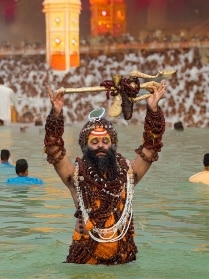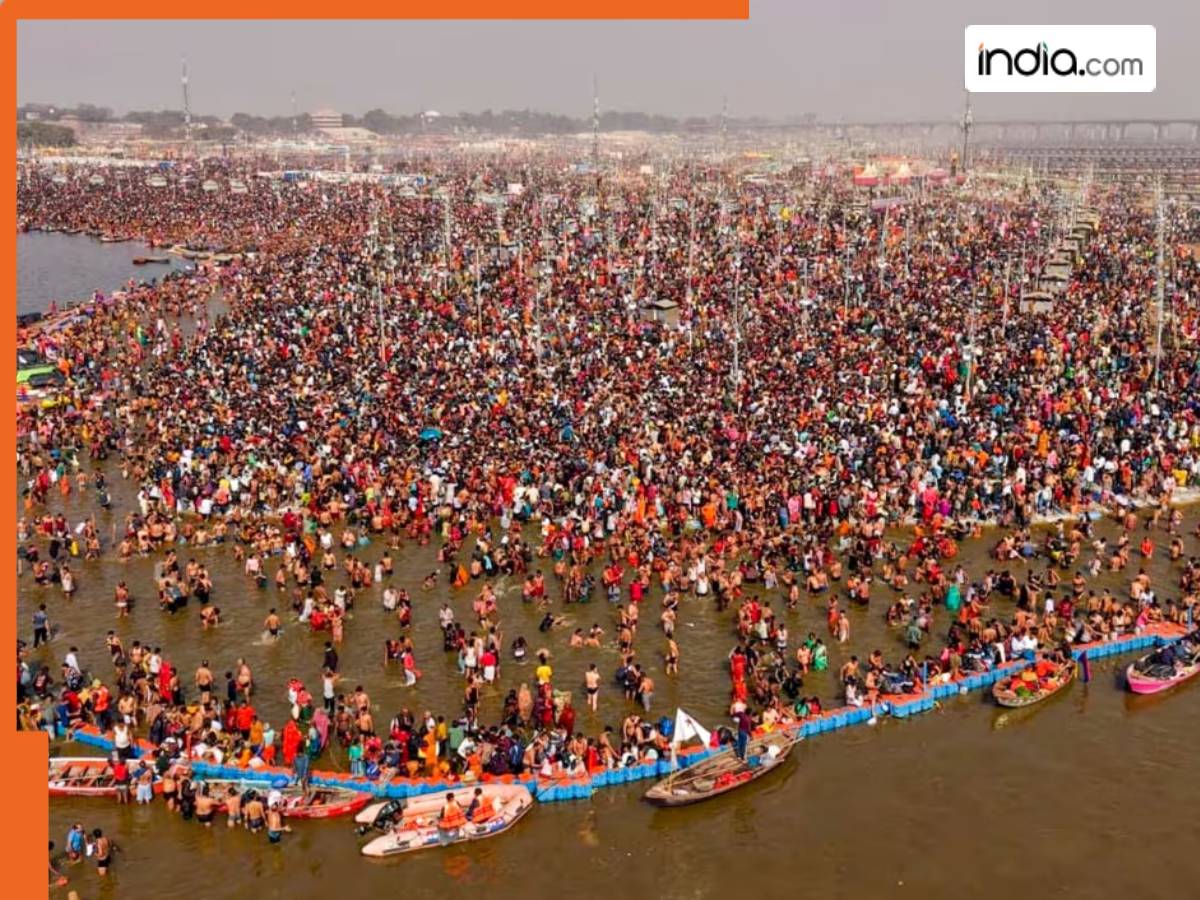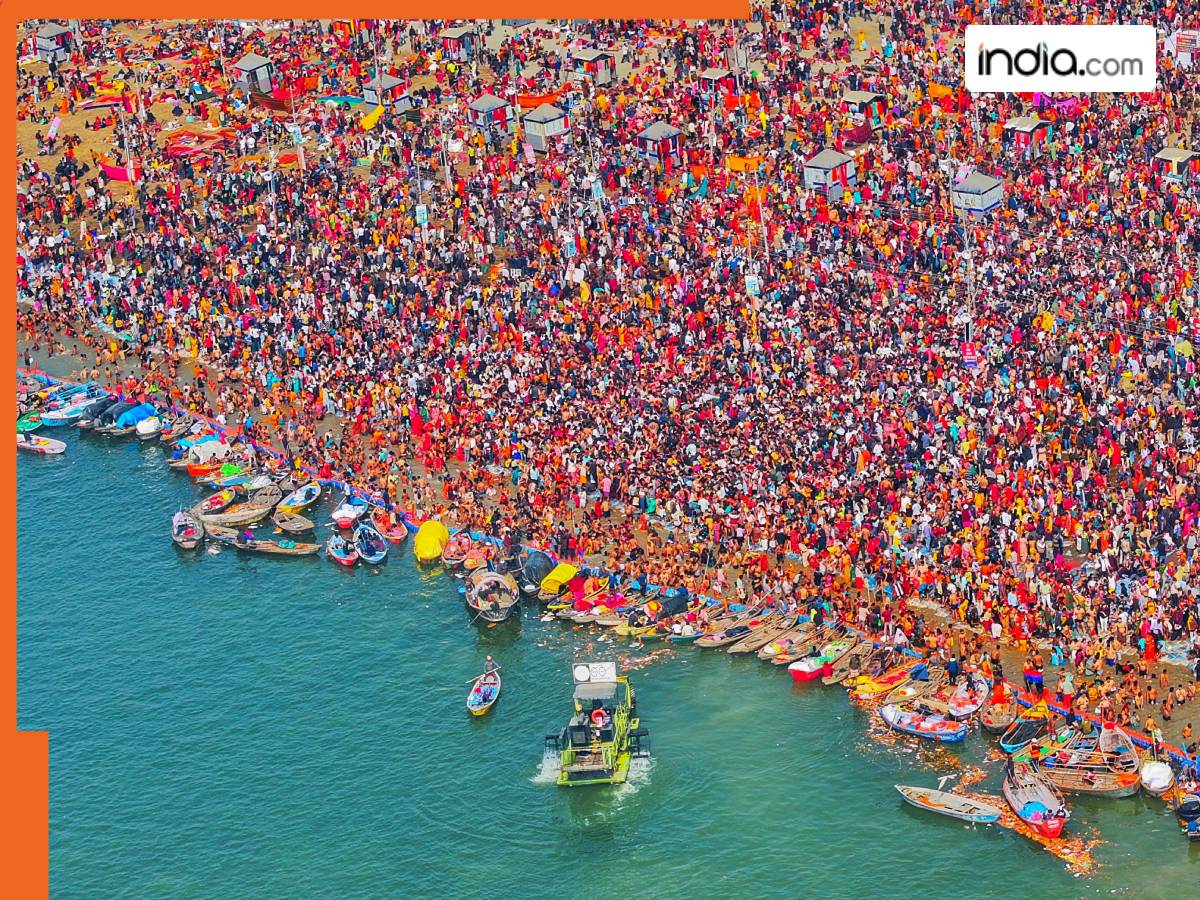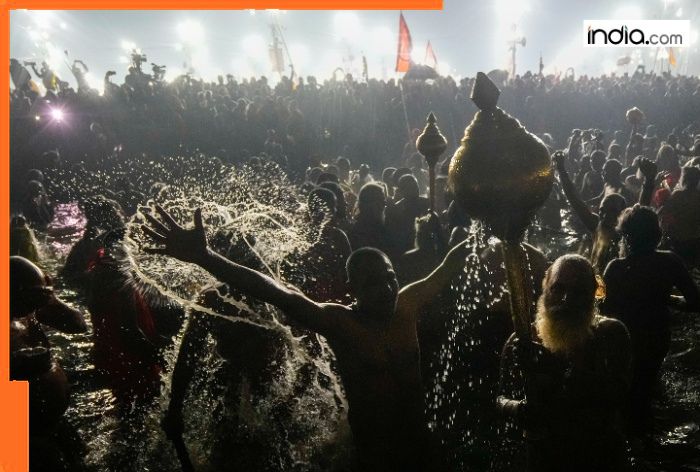

How to Reach
- Train
- Bus
- Flight
- Road
- Administration
The closest railway station to Prayagraj is Rambagh Station, located about 4.5 km from Triveni Sangam. After deboarding, you can reach Triveni Sangam via auto or rickshaw.
Distance from Triveni Sangam
-
Prayagraj JunctionApprox 8-9 kms
-
Prayag JunctionApprox 7 kms
-
Naini JunctionApprox 9 kms
-
Prayagraj RambaghApprox 4.5 kms
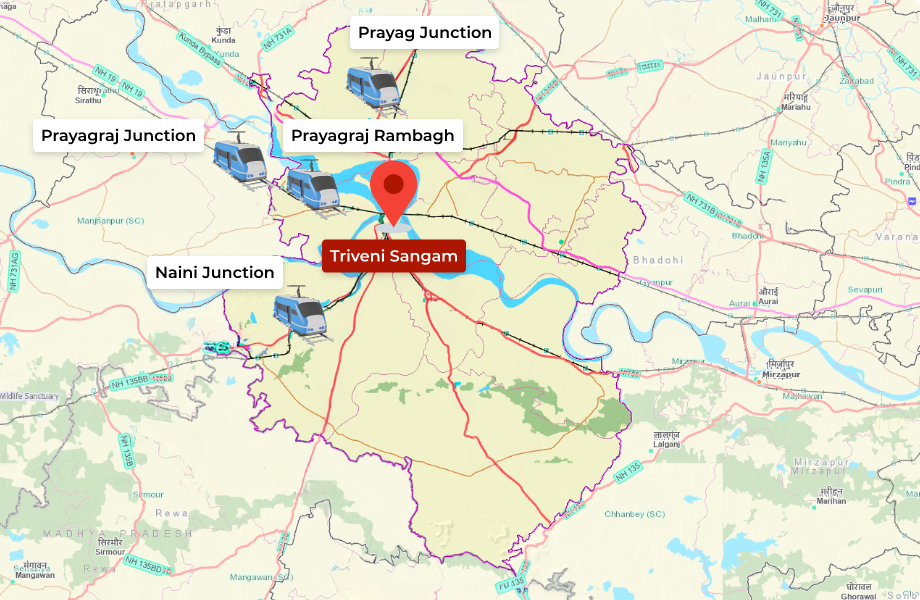
For those traveling by bus, the nearest stop to Triveni Sangam is the Rambagh Bus Stand, which is approximately 4.5 km away. From the Civil Line Bus Stand, the distance is about 5.7 km. Autos or rickshaws are available from both bus stands to Triveni Sangam.
Distance from Triveni Sangam
-
Allahabad Bus StandApprox 5.7 kms (Civil Line Bus Stand)
-
Rambagh Bus StandApprox 4.5 km
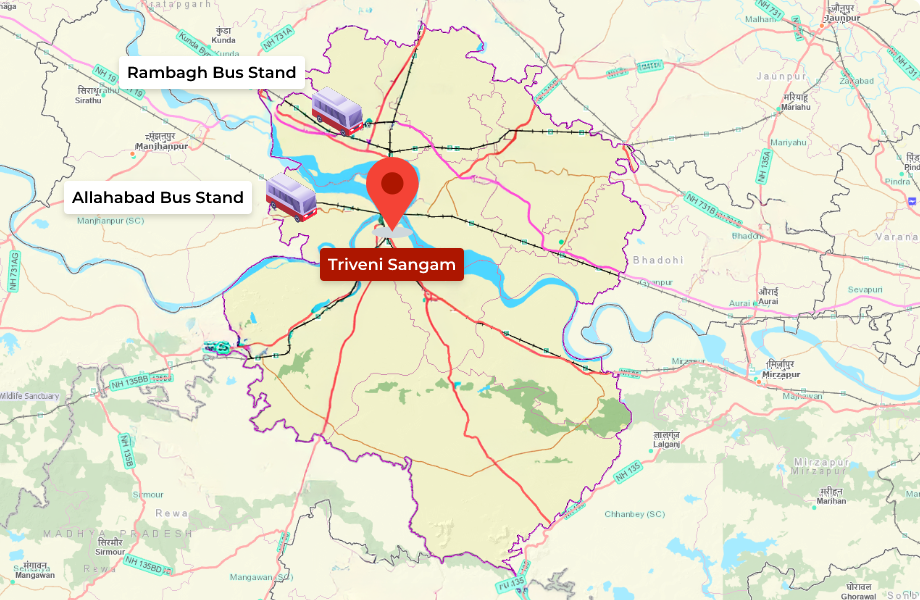
Devotees traveling by air need to land at Prayagraj Airport, which is about 19 km from Triveni Sangam. From there, you can reach the location using a taxi, auto, or bus
Distance from Triveni Sangam
-
Prayagraj AirportApprox 19 kms
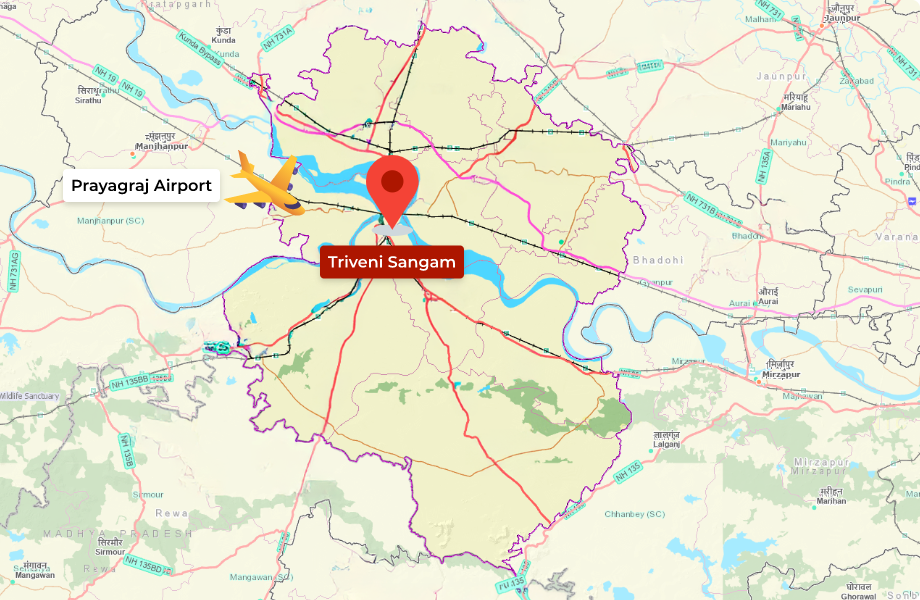
Distance from Triveni Sangam:
-
NH 19
Major east-west national highway that passes through Prayagraj.
-
NH 30
Connects Sitarganj, Uttarakhand to Ibrahimpatnam, Andhra Pradesh, running through Prayagraj.
-
NH 35
Connects Kabrai to Varanasi in Uttar Pradesh, passing through Prayagraj.
-
NH 330
Connects Prayagraj to Balrampur via Ayodhya.
The highways are all at an approx distance of 8-15 kms from Triveni Sangam.
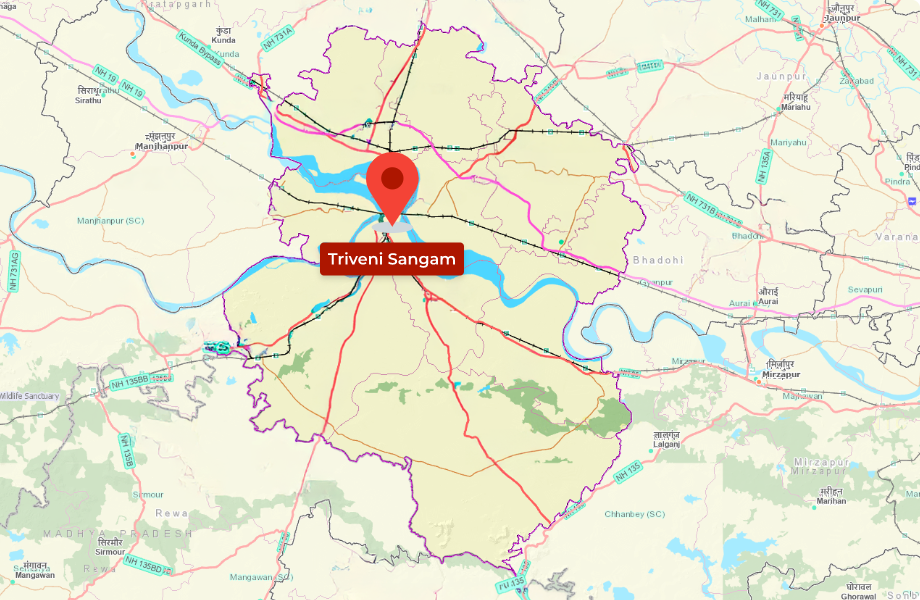
Chief Minister Yogi Adityanath government has made special arrangements for Mahakumbh. Assistance booths have been set up at various locations for the convenience of devotees arriving in Prayagraj. Additionally, helpline numbers and email IDs have been issued by the administration to provide support.
Prayagraj Mela Authority
-
Address: Parade Ground, Daraganj, Prayagraj, Uttar Pradesh - 211006
-
Telephone: 0532-2504011, 0532-2500775
-
Email: info.mahakumbh25@gmail.com
-
Maha Kumbh Helpline No.1920
-
Police Helpline No.112
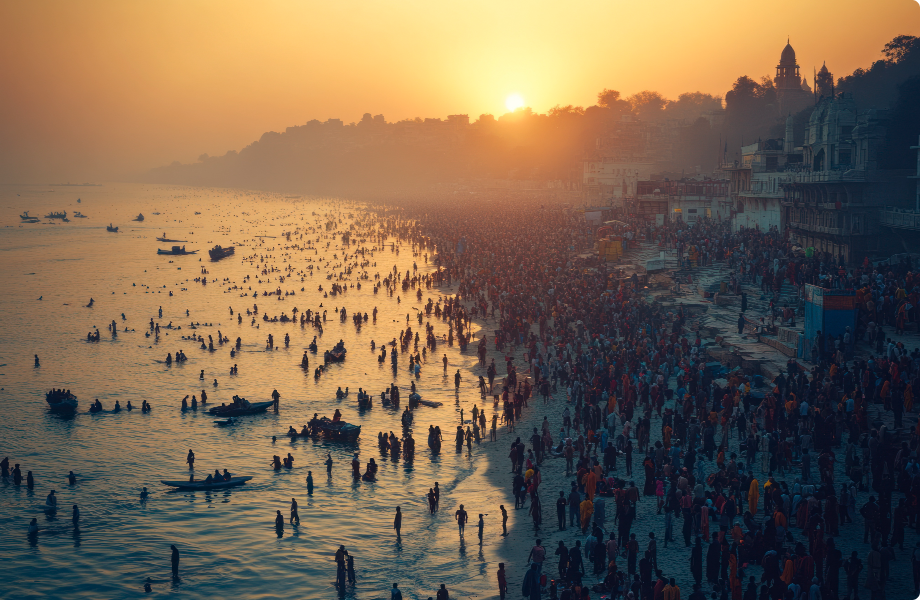
Snan Dates
January, 2025
Paush Purnima
Snan 
This day marks the unofficial inauguration of the Maha Kumbh Mela. It also signals the beginning of Kalpvasa, a period dedicated to intense spiritual practice and devotion observed by many pilgrims.
January, 2025
Makar Sankranti
Snan 
January 14, 2025: Celebrated as Makar Sankranti, this day signifies the sun's transition into Capricorn according to the Hindu calendar. It is a time for charitable donations and holds great religious significance for devotees.
January, 2025
Mauni Amavasya 
Snan 
January 29, 2025: Mauni Amavasya is considered one of the most auspicious days for bathing in the holy waters, believed to be particularly favorable due to celestial alignments.
February, 2025
Basant Panchami 
Snan 
February 3, 2025: This festival marks the arrival of spring and honors Goddess Saraswati, the deity of knowledge. Devotees often wear yellow attire and participate in rituals that celebrate learning and wisdom.
February, 2025
Maghi Purnima 
Snan 
February 12, 2025: The day signifies the conclusion of a month-long period of austerity for sages and hermits. A holy dip on this day is believed to yield significant spiritual benefits.
February, 2025
Maha Shivratri 
Snan 
February 26, 2025: The final day of the Maha Kumbh Mela coincides with Maha Shivratri, a festival dedicated to Lord Shiva that symbolizes spiritual growth and devotion.
Mahakumbh Today
Here’s Why Mahakumbh Mela 2025 Will Be The Experience Of A Lifetime
Meet man who quit high-paying job to become sadhu, his father was army commander in US, in Mahakumbh as...
Mahakumbh Mela 2025: Meet Swami Kailashanand Giri, the spiritual guru of Powell Jobs, billionaire wife of Apple founder Steve Jobs
Planning A Trip To Mahakumbh Mela 2025 Made Easy With These Hacks
Maha Kumbh 2025: Daily Delhi-Prayagraj Flights By Air India Now Available!
Webstories
Golden History of Mahakumbh
The Kumbh Mela, a significant religious festival in India, boasts a rich and ancient history that intertwines mythology and tradition. Its origins are rooted in the Hindu myth of the Samudra Manthan, or the churning of the ocean, where gods (Devas) and demons (Asuras) collaborated to obtain Amrit, the nectar of immortality. During this celestial event, drops of Amrit are said to have fallen at four sacred locations: Prayagraj, Haridwar, Ujjain, and Nashik. These sites have since become the focal points of the Kumbh Mela, which is celebrated every 12 years.
The Kumbh Mela has evolved significantly over the centuries. Historical records indicate that large gatherings for spiritual purposes have been documented since at least the middle of the first millennium CE. The festival gained prominence during the reign of King Harshavardhana in the 7th century, who contributed generously to its organization and encouraged participation from various sects and saints.
The festival saw increased involvement from ascetic orders known as akharas throughout the medieval period. These groups played a vital role in shaping the Mela's traditions and rituals, particularly during events like the Shahi Snan (royal bath), which symbolises spiritual leadership.
In modern times, Kumbh Mela has transformed into one of the largest peaceful gatherings in the world, attracting millions of pilgrims seeking spiritual renewal. The event is marked by ritual baths in sacred rivers, believed to cleanse sins and offer salvation. The alignment of celestial bodies determines the timing of each gathering, guided by Vedic astrology.
The festival not only serves as a religious pilgrimage but also fosters cultural exchange and dialogue among diverse communities. It stands as a testament to India's ability to preserve its rich traditions while adapting to contemporary society. As Kumbh Mela continues to thrive, it remains a powerful symbol of faith, unity, and devotion for countless individuals across generations.
